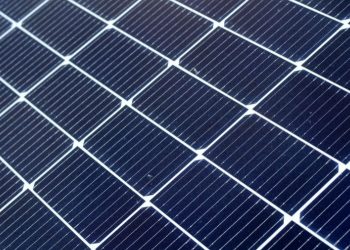Green battery discovery turns trash into treasure
by Win Reynolds for Northwestern News
Evanston IL (SPX) Jan 10, 2025
The batteries used in our phones, devices and even cars rely on metals like lithium and cobalt, sourced through intensive and invasive mining. As more products begin to depend on battery-based energy storage systems, shifting away from metal-based solutions will be critical to facilitating the green energy transition.
Now, a team at Northwestern University has transformed an organic industrial waste product into an efficient storage agent for sustainable energy solutions that can one day be applied at much larger scales. This marks the first time a waste molecule – specifically, triphenylphosphine oxide (TPPO) – has been used to power a redox flow battery.
“Battery research has traditionally been dominated by engineers and materials scientists,” said Northwestern chemist and lead author Christian Malapit. “Synthetic chemists can contribute to the field by molecularly engineering an organic waste product into an energy-storing molecule. Our discovery showcases the potential of transforming waste compounds into valuable resources, offering a sustainable pathway for innovation in battery technology.”
Malapit is an assistant professor in the department of chemistry at Northwestern’s Weinberg College of Arts and Sciences.
What are redox flow batteries?
Unlike lithium and other solid-state batteries which store energy in electrodes, redox flow batteries use a chemical reaction to pump energy back and forth between electrolytes, where their energy is stored. Though not as efficient at energy storage, redox flow batteries are thought to be much better solutions for energy storage at a grid scale. A small part of the battery market at present, the market for redox flow batteries is expected to rise by 15% between 2023 and 2030 to reach a value of 700 million euros worldwide.
Power from a common waste product
Thousands of tons of TPPO are produced each year by many organic industrial synthesis processes – including the production of some vitamins, among other things – but it is rendered useless and must be carefully discarded following production.
According to the new research, published in the Journal of the American Chemical Society, a “one-pot” reaction allows chemists to turn TPPO into a usable product with powerful potential to store energy.
“Not only can an organic molecule be used, but it can also achieve high-energy density – getting closer to its metal-based competitors – along with high stability,” said Emily Mahoney, a Ph.D. candidate in the Malapit lab and the paper’s first author. “These two parameters are traditionally challenging to optimize together, so being able to show this for a molecule that is waste-derived is particularly exciting.”
To achieve both energy density and stability, the team needed to identify a strategy that allowed electrons to pack tightly together in the solution without losing storage capacity over time. They looked to the past and found a paper from 1968 describing the electrochemistry of phosphine oxides and, according to Mahoney, “ran with it.”
Then, to evaluate the molecule’s resilience as a potential energy-storage agent, the team ran tests using static electrochemical charge and discharge experiments similar to the process of charging a battery, using the battery, and then charging it again, over and over. After 350 cycles, the battery maintained remarkable health, losing negligible capacity over time.
What’s next
“This is the first instance of utilizing phosphine oxides – a functional group in organic chemistry – as the redox-active component in battery research,” Malapit said. “Traditionally, reduced phosphine oxides are highly unstable. Our molecular engineering approach addresses this instability, paving the way for their application in energy storage.”
In the meantime, the group hopes other researchers will pick up the charge and begin to work with TPPO to further optimize and improve its potential.
Research Report:Triphenylphosphine Oxide-Derived Anolyte for Application in Nonaqueous Redox Flow BatteryClick to copy article link
Related Links
Northwestern
Powering The World in the 21st Century at Energy-Daily.com


















